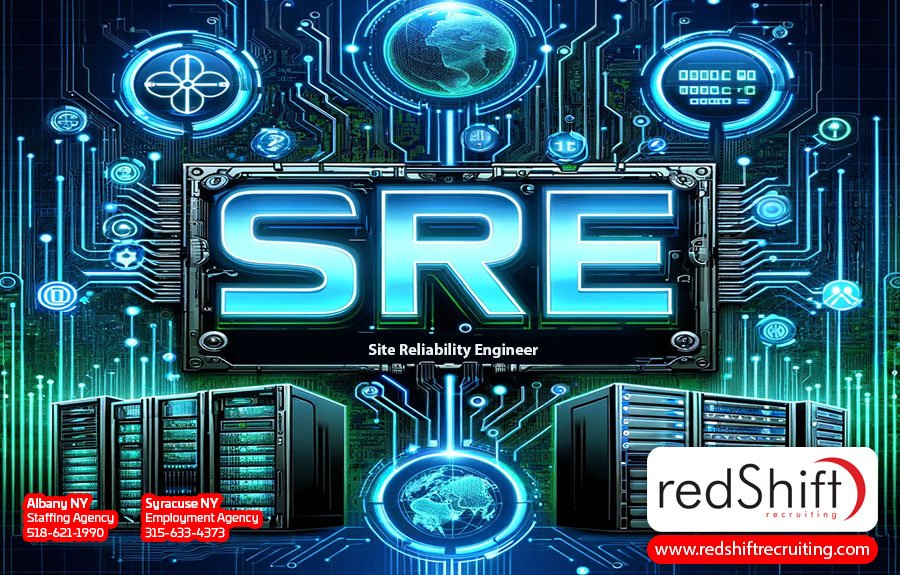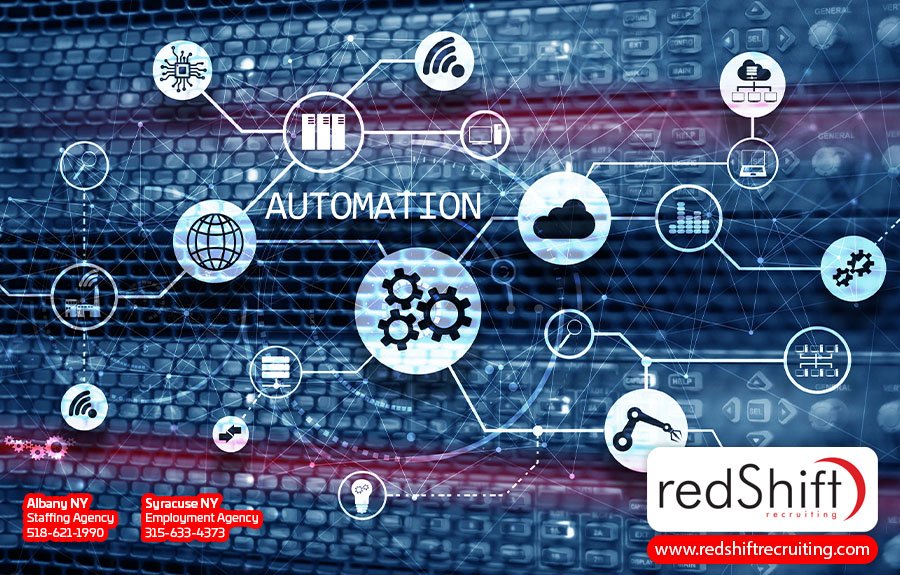The Essential Skills Every Site Reliability Engineer Needs
As systems grow exponentially in complexity, site reliability engineers (SREs) serve as the technical first responders needed to manage large-scale applications and infrastructure. This article unpacks the diverse expertise behind site reliability engineering, exploring the multifaceted skills every site reliability engineer needs to excel in this fast-paced domain. From understanding the foundations of systems administration to mastering automation and cloud technologies, we’ll discuss how SREs use their expertise to seamlessly integrate the advanced practices of incident management and post-mortem analysis. Whether you aspire to become an SRE or seek to better understand their critical role, read on to understand more about the key capabilities that allow SREs to design and run the complex systems users rely on 24/7.
Understanding the Foundations
The Site Reliability Engineer (SRE) plays a crucial role in ensuring the reliability and performance of software systems. This field combines principles from both software engineering and systems operations, requiring a blend of technical expertise in coding, systems administration, and network management. At its core, site reliability requires a deep understanding of operating systems, as they form the backbone of the infrastructure SREs are responsible for. This mastery ranges from basic administration to complex networking and robust security configurations. SREs work to create a bridge between development and operations teams, focusing on automating infrastructure, optimizing system performance, and ensuring continuous deployment and scalability. Their role is pivotal in maintaining the balance between releasing new features and ensuring that the existing systems run smoothly and efficiently.
Site reliability engineering is deeply rooted in its technical skills. This includes expertise in version control tools such as Git, which are vital for managing code changes and collaborating on software development. Version control is essential for maintaining the integrity and history of code, which is an important aspect of both development and operational processes. While scripting languages are crucial, an understanding of general programming paradigms like object-oriented programming and functional programming is also important. Soft skills, including problem-solving and analytical thinking, are also vital for diagnosing and resolving complex system issues. These skills enable SREs to delve deep into problems, find root causes, and implement effective solutions.
Configuration management tools are another pivotal part of the SRE toolkit. These tools, such as Ansible, Chef, or Puppet, enable SREs to manage and automate numerous servers efficiently, ensuring consistent system configurations across diverse environments. Additionally, the use of automation tools is a cornerstone of the SRE role. These tools help automate repetitive tasks, reduce the potential for human error, and increase the speed and efficiency of operational processes.
Equally important are monitoring tools, which allow SREs to track system performance and anticipate issues before they become critical. Tools like Prometheus, Nagios, or Datadog provide real-time insights into system health and performance, enabling proactive management of system resources. Data analysis and visualization skills are also becoming increasingly valuable for SREs. This includes proficiency in tools like Prometheus and Grafana for real-time monitoring and Apache Spark or Snowflake for large-scale data analysis. By leveraging these tools, SREs can effectively interpret complex monitoring data, identify trends across diverse metrics, and make informed decisions based on data-driven insights.
A strong foundation in computer science is essential for understanding the complexities of distributed systems. This knowledge enables SREs to effectively manage and troubleshoot the large-scale, interconnected systems that are the hallmark of modern cloud-based services. For this reason, modern SREs must be adept at navigating the ever-evolving landscape of cloud computing, with expertise in major platforms like AWS, Azure, and GCP. This allows them to leverage the scalability, elasticity, and cost-efficiency of cloud infrastructure to build and maintain reliable and resilient systems.
Finally, collaboration and communication skills are crucial for SREs, as they need to work effectively with various teams and stakeholders. These skills are essential for aligning objectives, sharing insights, and implementing solutions collaboratively. In particular, SREs must work closely with software engineers to ensure the development and operations teams are aligned, facilitating smoother software releases and operational stability. The goal is to build systems that are scalable, reliable, and efficient, with a focus on optimizing system performance.
Now that we’ve briefly reviewed the basics, let’s look at some of these key competencies in more detail.
Proficiency in Automation
For site reliability engineers (SREs), proficiency in automating processes is essential to streamline workflows and ensure consistent, reliable deployments. You should be adept at using configuration management tools like Ansible, Puppet, or Chef, which are crucial for automating infrastructure provisioning and deployment and for managing systems efficiently at scale.
An understanding of continuous integration (CI) and continuous deployment (CD) further enhances an SRE's capability to automate the software delivery process. Tools like Jenkins, GitLab CI/CD, and other popular options such as GitLab Runner, CircleCI, or Travis CI are key to this aspect of automation. They enable SREs to automate testing and integrate these processes with version control tools, effectively broadening the scope of their automation capabilities and allowing for quicker and more efficient delivery of updates and improvements. This integration requires a solid grasp of automated testing practices and familiarity with various version control tools. Scripting languages like Python, Bash, or Go also play a crucial role in automating these processes, ensuring seamless integration and consistent execution.
In addition, Infrastructure as Code (IaC) is an integral part of modern SRE practices. IaC automates the provisioning and management of infrastructure, making it a vital tool for SREs to ensure quick and consistent setup across environments. Tools like Terraform are increasingly utilized in cloud-native infrastructure management, allowing SREs to define and deploy infrastructure using a declarative language. This approach enhances consistency and efficiency, as seen when an SRE uses Terraform for deploying scalable and resilient cloud infrastructure or employs Ansible for setting up and configuring new server environments.
Furthermore, proficiency in automation is closely tied to strong troubleshooting skills. The ability to swiftly identify and resolve issues is vital for maintaining the reliability of distributed computing systems, particularly in cloud computing environments. SREs must combine their technical expertise with problem-solving abilities to address and overcome challenges promptly, ensuring the stability and efficiency of the systems they manage.
Mastery of Monitoring and Alerting
Mastering the art of monitoring and alerting is crucial for a site reliability engineer to proactively identify and resolve issues within distributed computing systems and ensure the smooth operation and performance of cloud-native applications. While Prometheus and Grafana are commonly used for their robust metrics and dashboards, tools like Datadog, New Relic, or Splunk offer broader insights into system health. These tools enable SREs to set up comprehensive alerts and dashboards, alerting them to potential problems before they escalate. Beyond these tools, SREs also monitor core metrics like CPU utilization, memory usage, and network latency, providing a comprehensive view of system health and enabling proactive identification of potential bottlenecks or resource constraints.
Proficiency in log management is equally essential for SREs. Tools such as the ELK Stack play a significant role in troubleshooting and debugging complex issues by providing detailed logs and data analysis, which are indispensable in understanding and resolving intricate system behaviors. Log analysis plays a crucial role in troubleshooting beyond simple error messages, however. By analyzing detailed logs, SREs can investigate security incidents, diagnose performance bottlenecks, and even uncover hidden patterns in system behavior, leading to proactive optimizations and improved system resilience.
Additionally, tracing tools like Jaeger or Zipkin are critical for monitoring microservices and distributed computing structures. They offer a unique perspective by visualizing request flows across distributed systems. By mapping the journey of individual requests, they allow SREs to pinpoint performance issues within complex microservice architectures and identify specific components causing delays or errors. For instance, an SRE might use these tools to swiftly identify and address a memory leak in a cloud application, preventing the issue from impacting end-users.
Effective alerting strategies are about more than setting up notifications; they include managing alert fatigue to ensure that alerts are actionable and relevant. This is especially important for maintaining system reliability without overwhelming team members. By developing strategies to mitigate alert fatigue, SREs can provide valuable support to DevOps teams, IT operations, security teams, and software development groups, contributing to the overall high availability and reliability of systems. The combination of these skills—monitoring, log management, and alert strategy—forms the backbone of an SRE’s toolkit, enabling them to detect, analyze, and resolve performance issues.
Expertise in Cloud Technologies
Expertise in cloud technologies is pivotal for Site Reliability Engineers (SREs), enabling them to cater to business needs for scalability, cost-efficiency, and agility. This expertise involves a thorough understanding of cloud service categories like compute, storage, and databases across platforms such as AWS, Azure, GCP, and others. For instance, services under these categories include AWS EC2 for compute, Azure Blob Storage for storage, and GCP Cloud SQL for databases. Cloud platforms facilitate scalability and reliability through features like autoscaling, which dynamically adjusts resources based on demand, and load balancing, which distributes traffic evenly across servers. Knowledge of containerization and orchestration with tools like Docker and Kubernetes is crucial to scaling and managing containerized applications effectively, while leveraging Infrastructure as Code (IaC) tools like Terraform and Ansible is required for automated cloud infrastructure provisioning and management, which further enhances efficiency and consistency. Automation and continuous delivery are also integral aspects of cloud technologies, aiding in the efficient fulfillment of business requirements.
The rise of serverless computing has further enhanced the capabilities of cloud-native applications, offering scalable, on-demand functionality without the need for managing servers. SREs should also be familiar with cloud cost optimization strategies, as they involve balancing performance needs with budget constraints, a key aspect of effective cloud resource management. Meanwhile, disaster recovery strategies are essential knowledge for site reliability engineers to ensure business continuity in the event of system failures. Finally, remaining effective in this field requires adaptability and a strong willingness to learn in order to stay current with the latest cloud advancements and apply them to improve system resilience and efficiency.
Strong Communication and Collaboration Skills
Alongside other key soft skills such as critical thinking, problem-solving, attention to detail, and time management, effective collaboration and communication skills are vital for site reliability engineers (SREs) to excel. Using tools such as Slack, Jira, and Confluence, SREs can work seamlessly with various team members, including developers, product managers, and security engineers, to ensure the smooth functioning of software systems. Effective collaboration extends beyond communication, however, involving active participation in incident response, troubleshooting, knowledge sharing, and fostering shared ownership of system health. These collaborative efforts are key to maintaining a cohesive and efficient workflow.
For SREs, documenting processes, procedures, and incident reports accurately is as important as presenting insights to stakeholders in a concise and precise manner. Active listening and empathy are also crucial for understanding diverse perspectives within a team. This understanding facilitates clear and efficient communication between different groups, such as developers and operations. Additionally, conflict resolution skills are vital for navigating disagreements productively. The ability to resolve conflicts amicably contributes significantly to maintaining a positive and collaborative team environment. These soft skills, combined with technical expertise, make SREs invaluable assets in managing complex software systems and ensuring their reliability and efficiency.
Continuous Learning and Adaptability
The continuously evolving nature of the IT field means that site reliability engineer skills must include not only technical proficiency but also a strong commitment to continuous learning and adaptability. As a site reliability engineer, your ability to quickly assimilate new technologies and methodologies is crucial. This involves actively keeping pace with industry trends, applying new concepts and tools as they emerge, and being resilient in handling changing priorities and dynamic work environments. Your adaptability allows you to effectively respond to unexpected changes or challenges, maintaining the reliability and efficiency of the systems you manage.
To stay abreast of the latest developments, actively participating in industry forums such as Reddit communities and Stack Overflow, relevant workshops, and conferences is invaluable. These platforms offer insights into emerging technologies and best practices, fostering a culture of continuous professional growth. Moreover, pursuing online courses and certifications is a practical way to acquire new knowledge and enhance your skill set. This proactive approach to learning not only sharpens your existing capabilities but also prepares you for future challenges and innovations in the field.
By embracing a mindset of ongoing learning and being open to adapting to new technologies and challenges, SREs can position themselves at the forefront of their profession. This commitment not only ensures your personal and professional growth but also contributes significantly to the success and resilience of the systems and organizations you support.
Real-World Examples
Now let's consider a real-world scenario showcasing how a site reliability engineer leverages their expertise in monitoring tools and version control systems to address system challenges. Imagine an SRE starts their day by analyzing logs and reviewing alerts. They notice a spike in CPU utilization, a critical metric, signaling a potential performance issue. Using monitoring tools like Prometheus or Grafana, the SRE pinpoints the anomaly to a specific service experiencing increased load. To mitigate this issue, they adjust configurations and scale resources, such as spinning up new instances or adjusting container configurations, proactively preventing system disruption. In this way, monitoring tools can be used not only to detect issues but also to implement immediate, informed actions to maintain system health while contributing to broader goals like maintaining uptime.
In addition to monitoring, version control systems like Git play a vital role in code management and collaboration. For instance, imagine that during a recent code release, an SRE notices a bug, such as a security vulnerability, that could impact system performance. They collaborate with developers using pull requests, seamlessly managing code changes across different programming languages. This collaborative approach ensures that the new code is thoroughly reviewed and tested before being merged, enhancing the reliability of the release process. In this scenario, SREs and developers work together to diagnose and resolve real-world system issues, leveraging their combined expertise to ensure optimal system performance and reliability while meeting user experience expectations.
Frequently Asked Questions
What Are the Key Challenges Faced by Site Reliability Engineers?
Site reliability engineers encounter a variety of challenges in their day-to-day roles, ranging from managing and optimizing large-scale systems to ensuring the high availability and reliability of services in operations. One common challenge is quickly scaling infrastructure during unexpected traffic spikes to maintain system performance and availability. Additionally, SREs must effectively respond to incidents, troubleshoot issues, and collaborate with cross-functional teams. Staying updated with emerging technologies and continuously improving skills is also crucial for overcoming these challenges and excelling in the role.
How Does the Role of a Site Reliability Engineer Differ From That of a Traditional Software Engineer or System Administrator?
The role of a site reliability engineer (SRE) significantly differs from traditional roles such as software engineers or system administrators. Unlike traditional roles, an SRE combines expertise in both software development and system administration, focusing on ensuring the stability and performance of complex systems. This hybrid role requires not only strong problem-solving skills and the ability to work under pressure but also a proactive and data-driven approach to system management. SREs are tasked with developing and implementing solutions that enhance system reliability and efficiency, often before issues become critical. Furthermore, excellent communication and collaboration skills are essential for SREs, as they need to coordinate effectively with cross-functional teams, bridging the gap between development and operations.
What Are Some Common Misconceptions About the Role of a Site Reliability Engineer?
Common misconceptions about the role of a site reliability engineer include the idea that they are solely responsible for fixing problems, when in reality they focus on preventing issues through automation and proactive measures. Another misconception is that SREs only work with infrastructure, but in fact they also collaborate closely with software developers and software engineers to improve system performance and stability. Finally, while some may think that SREs are just glorified sysadmins, their skills go beyond traditional system administration and encompass a wide range of technical expertise.
How Do Site Reliability Engineers Handle Incidents and Outages? What Is Their Role in Incident Response and Post-Mortems?
Site reliability engineers play a critical role in handling incidents and outages, responding promptly and effectively to ensure minimal disruption. During an incident, the SRE team must collaborate closely with other teams, utilizing specific tools like PagerDuty for incident alerts and coordination. They focus on identifying the root cause of the problem and swiftly implementing the necessary fixes. Post-incident, SREs are instrumental in conducting blameless post-mortems, analyzing what happened to learn from the event. This process often involves using frameworks or tools designed for structured incident analysis. Through their expertise in incident management and response, SREs are vital in maintaining smooth operations and driving continuous improvements to the system's reliability.
What Are Some Emerging Trends and Technologies in Site Reliability Engineering?
As a site reliability engineer, staying abreast of emerging trends and technologies is crucial for adapting and excelling in your role. Key areas to focus on include advancements in cloud computing, specifically serverless computing and edge computing, which are reshaping how services are deployed and managed. Additionally, the integration of AI/ML in system monitoring and incident response is becoming increasingly prevalent, offering sophisticated solutions for predictive maintenance and automated problem resolution. Embracing new methodologies like DevOps, along with continuous integration/continuous delivery (CI/CD) processes, is also essential. Finally, keeping up-to-date with the latest automation tools and containerization technologies will further enhance your ability to maintain reliable and efficient systems in this rapidly evolving field.
Conclusion
As software systems rapidly expand, site reliability engineers have quickly become indispensable for many organizations as optimizers, troubleshooters, and engineers wrapped into one technical role focused on preempting failure. By honing expertise across infrastructure, automation, monitoring, release management, and more, SREs provide the skilled capacity needed to scale reliably. Driven by a commitment to stability, performance optimization, and problem-solving, the SRE team enables innovation without interruption. For technology enthusiasts seeking impactful careers, becoming an SRE promises complexity, learning, and influence.
Article Author:
Ashley Meyer
Digital Marketing Strategist
Albany, NY






